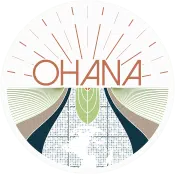
EU Waste Framework Directive: A Deep Dive into the 2023 Revision Proposal
Addressing the issue of waste generation and management is key to safeguarding our planet’s future and, recognising this critical need, the EU Commission developed the Waste Framework Directive (WFD), which will soon be updated.
As a cornerstone of the EU’s green transition, the Waste Framework Directive is the first topic covered in our new Sustainability & Waste blog series, which will explore the issue of waste within the EU and beyond its borders. In this piece, we will offer you an overview of the WFD itself and take you through the details and challenges of the Commission’s revision proposal for the policy.
So read on to get a full picture of the updates expected for the Waste Framework Directive, and stay tuned for the upcoming articles in this special series, which will include:
- An Interview with Melanie Hackler
- An Overview of EPR Schemes Across EU Member States (FR & NL)
- A Discussion About Common Misconceptions Around Recycling
Want someone with deep experience and connections in the EU to help guide your sustainability strategy? Get in touch!
Waste Framework Directive: An Overview
Published in 2008, the Waste Framework Directive is a legislative piece elaborated by the EU to promote a more circular economy and reduce the environmental impact of waste.
Within its text, the WFD establishes base concepts and definitions around waste and offers a comprehensive framework for waste management practices, including the prevention, recycling, and safe disposal of waste materials. It also introduces the “polluter pays principle” and the Extended Producer Responsibility (EPR).
Conditions for Waste Management and The “Polluter Pays Principle”
The “polluter pays principle” determines that organisations responsible for pollution or environmental damage bear the costs associated with mitigating or cleaning up that pollution, and the Extended Producer Responsibility policy is an application of that principle. As the name suggests, the EPR expands the level of responsibility of producers, making them accountable for a product’s environmental impact across its entire life cycle, from raw material selection to disposal once it’s discarded.
Another important element of the WFD is the introduction of the five-step “waste hierarchy”. According to the EU Commission, waste management practices should follow these steps:
- Prevention
- Preparing for re-use
- Recycling
- Recovery
- Disposal
In essence, the message throughout the document is that, first and foremost, our collective goal is to prevent waste generation. Where that is not possible, sending waste to landfills must then be considered the last resort.
Additionally, under the WFD, any waste generated should be managed in accordance with four main conditions:
- Without endangering human health and harming the environment;
- Without posing any risk to water, air, soil, plants or animals;
- Without causing any nuisance through noise or odours;
- Without any negative impacts on the countryside or places of special interest.
Targets for Member States
Through the WFD the EU Commission also set objective targets to be met by all Member States:
- By 2020, the preparing for re-use and recycling of waste materials (such as paper, metal, plastic and glass) from households must increase to a minimum of overall 50% by weight;
- By 2020, the preparing for re-use, recycling and other material recovery, including backfilling operations using waste to substitute other materials, of non-hazardous construction and demolition waste must increase to a minimum of 70% by weight;
- The preparation for re-use and recycling of municipal waste must increase, by weight, to a minimum of 55% by 2025, 60% by 2030 and 65% by 2035.
For textiles, the most important aspect of the WFD was the obligation for EU nations to collect textile waste separately by 1st January 2025.
The Waste Framework Directive Revision Proposal
As forecasted by our team in our 2022 recap article, on the 5th of July of this year the EU Commission put forward a proposal for a targeted revision of the Waste Framework Directive, focusing on the matters of food and textile waste.
One of the primary goals of the proposal is to accelerate the development of the separate collection, sorting, reuse and recycling of textile waste, in alignment with the terms of the EU Textile Strategy. But it also includes some polemic food waste reduction targets to be achieved by all 27 EU countries, by the year 2030.
Addressing the Issue of Textile Waste
To improve waste management within the textile sector, the WFD revision proposes the introduction of mandatory and harmonised Extended Producer Responsibility (EPR) schemes in all Member States. Under these schemes, textile producers and fashion brands will be required to pay fees to support the waste collection and management conducted by local authorities. Such fees would be “eco-modulated” on the basis of the environmental performance of the textiles. The EPR schemes should also facilitate the implementation of the obligation to collect textiles separately by 2025, as per the current legislation.
However, the new version of the WFD will go beyond regulating how Member states deal with waste at a local level. To end the common practice of exporting textile waste to third-party countries unequipped to properly manage it, the document offers clear criteria for categorising textile materials as waste and what differentiates them from reusable textiles.
These measures are expected to complement the new Regulation on Waste Shipment proposal.
New Food Waste Reduction Goals
Under the proposed update of the Waste Framework Directive, EU countries can prepare to meet two new food waste reduction targets by December 2030:
- A reduction of 10% of the generation of food waste in processing and manufacturing, compared to the amount generated in 2020;
- A reduction of 30% of the generation of food waste per capita in retail, restaurants and households, compared to the amount generated in 2020.
To achieve the new targets, the Commission proposes that Members States develop their own internal programmes, but outlines that the adopted measures should include:
- The creation of awareness-raising and behavioural change campaigns and interventions;
- Actions to address inefficiencies in the functioning of the food supply chain;
- Initiatives to encourage food donations;
- Initiatives to support skill development and facilitate access to funding opportunities.
The Challenges and Gaps Within the Proposal’s Text
While the revision proposal is seen as an important step in the right direction when it comes to reducing the environmental impact of the food and textiles sectors, it leaves many questions unanswered.
A Bit of What’s Missing Around Textiles
In relation to textiles, since several countries already have EPR schemes in place, all with very diverse requirements, their harmonisation is essential and highly welcomed. However, further clarification is still needed on a number of aspects, such as the amounts to be charged for the “eco-modulated” fees and the governance of Producer Responsibility Organisations. The document is also missing the much-needed separate targets for textile waste prevention, collection, reuse and recycling.
Potential Issues With the New Food Waste Rules
The Commission’s text also has significant issues when it comes to the solutions proposed for the food waste problem:
- The level of ambition of the targets – The reduction targets fall short of specialists’ expectations, and are seen as too modest to achieve the goal of halving food waste by 2030, as agreed under the Sustainable Development Goal 12.3.
- How performance will be measured – The text determines that the year 2020 will serve as the baseline for evaluating Member States’ performance, but that countries may use a previous year as a reference if they can provide data collected using methods comparable to the methodology set by the Commission. This is problematic because, although this flexibility is certainly welcomed, providing valid data collected using methods comparable to the Commission’s could prove to be difficult for many nations.
- The Lack of clarity in the terminology – It is not specified what the term “per capita” in the second target means, and why it was not mentioned in the first target.
A potentially problematic “collective target” approach – Establishing a collective food waste reduction target encompassing retail, restaurants, and households poses considerable challenges in terms of implementation, enforcement, and measurement. Industry stakeholders argue that separate targets would be more appropriate, since they have little to no control over how households behave, for example. - The limited scope of the targets – The targets do not apply to primary production, which means that a large portion of the food supply chain (and consequently of the food waste problem) is left untouched.
Expected Timeline for the Legislation
Regarding food waste, Member States should review and adapt their food waste prevention programmes to meet the set targets within two years, after the entry into force of the revised Directive. By 2027, the Commission would also be required to review the food waste reduction targets set by the document and amend them if needed.
For textiles, EU countries will have a window of 18 months after the entry into force to transpose the new rules into national law, and 30 months (also from the entry into force date) to have their EPR schemes up and running.
Want someone with deep experience and connections in the EU to help guide your sustainability strategy? Get in touch!
Join our newsletter to keep up to date with the latest news and information coming out of the EU.


